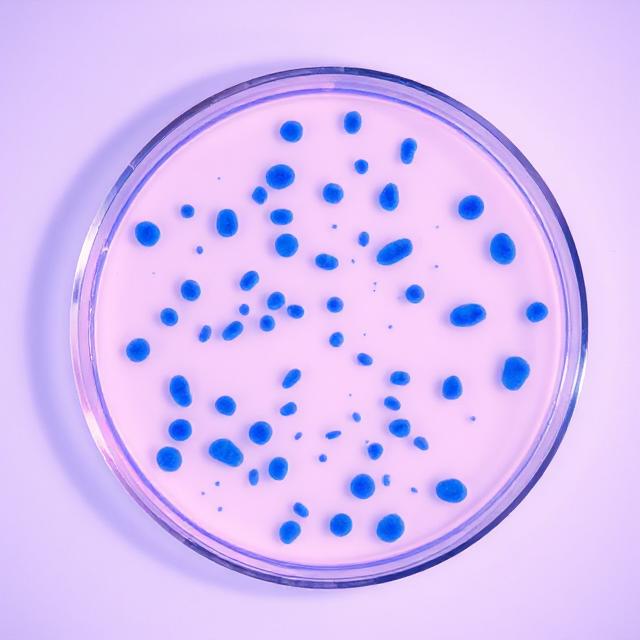
Contract Development and Manufacturing Organizations (CDMOs) specializing in fermentation and biomolecule production face complex contamination risks that can jeopardize batch integrity, regulatory compliance, and product efficacy. While spore-forming bacteria (sporocidal challenges) are a well-known concern, contamination threats extend far beyond spores. These risks, if left unmanaged, can result in costly recalls, compromised therapeutic potency, and even regulatory shutdowns. Given the expanding role of microbial fermentation in biopharma, food tech, and industrial biotech, contamination control has become an essential pillar of CDMO operations.
This article explores nine major contamination types, the biological mechanisms behind them, mitigation strategies, and the companies and researchers leading the charge in solving these challenges.
1. Microbial Contamination
Microbial contamination remains the most persistent threat in precision fermentation, where engineered strains like E. coli, Saccharomyces cerevisiae, or Lactobacillus are leveraged to produce high-value biomolecules. The optimized nature of these strains makes them particularly vulnerable to foreign microbial intrusion.
Common Culprits:
- Bacteria such as Pseudomonas, Bacillus, and Enterobacter can outcompete production strains, reducing target metabolite yield and producing unwanted metabolic byproducts.
- Yeast & Fungi including Candida, Aspergillus, and Penicillium can modify fermentation kinetics, generate mycotoxins, or clog bioreactor lines.
- Mycoplasma, typically associated with mammalian cell cultures, has been detected in engineered microbial systems, posing serious detection challenges due to their lack of a cell wall.

Case Study: MIT Synthetic Biology Lab MIT researchers have pioneered a CRISPR-based biosensor for rapid microbial contamination detection in bioreactors. This tool can provide alerts within minutes, reducing the risk window where traditional assays might take days. (MIT Research)
Prevention Strategies:
- HEPA-filtered cleanroom environments to minimize airborne microbial loads.
- Metagenomic sequencing and qPCR for microbial load analysis.
- Media engineering with bacteriostatic agents to suppress undesired growth.
- Smart bioreactor sensors for automated microbial event detection.
2. Phage (Bacteriophage) Contamination
Bacteriophages are viruses that specifically target bacteria, often escaping conventional QC measures. A phage attack can obliterate entire fermentation runs by lysing engineered bacteria.
Risks and Impact:
- Lytic Phages trigger explosive cell lysis, collapsing cultures rapidly.
- Lysogenic Phages integrate into host DNA, destabilizing gene expression and fermentation consistency.
- Yield Instability arises from inconsistent protein expression post-integration.
Spotlight: Ginkgo Bioworks Ginkgo is engineering phage-resistant bacterial strains using CRISPR-Cas systems to minimize viral impact without resorting to harsh sterilization. (Ginkgo Bioworks)
Preventative Approaches:
- Genetically engineered phage resistance via anti-phage CRISPR arrays.
- High-efficiency phage filtration on air and water inputs.
- UV-C sterilization protocols for environmental surfaces.
- Real-time phage biosensors for in-line detection.
3. Cross-Contamination Between Batches

In multi-product CDMO environments, residual material from one production run can easily interfere with the next. Cross-contamination can compromise batch identity, violate regulatory standards, and trigger recalls.
Common Vectors:
- Residual Live Cells in reactor hardware, even after cleaning.
- Carryover Media components providing unintended nutrient loads.
- Mixed Species Exposure in shared fermentor infrastructure.
Example: Lonza Lonza minimizes cross-contamination risk by deploying single-use bioreactors, eliminating hardware reuse and simplifying changeovers.
Best Practices:
- Implementation of single-use technologies (SUTs).
- Validated CIP/SIP procedures.
- In-process endotoxin and bioburden testing.
- Strict segregation of strains and workflows.
4. Chemical Contamination
Chemical contaminants—from cleaning agent residues to raw material impurities—can negatively affect cell viability and product purity.
Sources & Effects:
- CIP Residue: Residual NaOH or peracetic acid can stress or kill production cells.
- Impure Feedstocks: Media additives like yeast extract may contain reactive contaminants.
- Trace Metals: Even minor excesses of copper or iron can catalyze oxidative stress.
Control Strategies:
- Validation of clean-in-place (CIP) protocols with swab and rinse testing.
- Certified GMP-grade input materials.
- Ion exchange or chelation-based metal removal.
- Real-time conductivity and pH sensors to track purity.
5. Genetic Instability & Mutations
Even in well-optimized systems, genetic drift and plasmid loss can erode production yields and create inconsistencies.
Challenges Include:
- Plasmid Instability: Without continuous selective pressure, plasmid-borne genes can be lost.
- Strain Drift: Over many passages, mutations can accumulate, lowering expression levels.
- Recombination Events: These can destroy expression cassettes or alter regulation.
Solutions:
- Use of chromosomally integrated systems.
- Regular cell banking and characterization.
- Whole genome sequencing (WGS) on master and working cell banks.
- Application of feedback-regulated selection pressure mechanisms.
6. Environmental Contaminants
Unfiltered air, unsterile water, or improperly gowned personnel can introduce unwanted microorganisms into fermentation zones.
Threat Sources:
- Airborne Spores can survive in ductwork or non-HEPA-filtered systems.
- Waterborne Microbes form biofilms inside piping systems.
- Human-Introduced Particulates from hair, skin, or improper gowning.
Mitigation Techniques:
- Class 100/ISO 5 cleanroom protocols.
- Ultraviolet or ozone-based water purification.
- Active air sampling and surface contact plates.
- Personnel training and real-time access control logs.
7. Endotoxin & Pyrogen Contamination
Even heat-stable, invisible contaminants like endotoxins can compromise therapeutic safety.
Key Origins:
- Gram-Negative Cell Walls: Especially from E. coli.
- Fungal Cell Walls: Can release β-glucans, triggering immune responses.
Control Methods:
- LAL testing for release and in-process monitoring.
- Ultrafiltration and anion exchange chromatography.
- Glassware depyrogenation by dry-heat ovens.
- Depyrogenated media and reagent preparation.
8. Downstream Processing Contamination
Even post-fermentation, downstream risks abound.
Critical Failures:
- Filter Breakthroughs in microfiltration.
- Chromatography Fouling with retained host cell proteins.
- Insufficient Host Protein Clearance affects purity profiles.
Prevention Plans:
- Automated chromatography wash cycles.
- Inline filter integrity testing.
- ELISA and MS-based residual protein analytics.
9. Viral Contamination in Cell-Based Fermentation
Hybrid or mammalian CDMO operations face high biosafety risks from adventitious viral particles.
Hazards:
- Serum-based Media Contaminants
- Integrated Retroviruses in cell substrates
Decontamination Measures:
- Nanofiltration, UV-C, and gamma irradiation.
- Chemically defined, serum-free media.
- Routine viral clearance validation per ICH Q5A.
Closing Thoughts
Fermentation-based CDMO manufacturing must evolve with proactive, layered contamination control. Leaders like Elise Biopharma, Ginkgo Bioworks, WuXi Biologics, and Lonza are embracing AI-driven biosurveillance, CRISPR-based defenses, and modular hardware design to reduce contamination risk.
Core Strategies Include:
- GMP-aligned aseptic technique
- Automated, validated cleaning systems
- Real-time biosensors and PAT
- Advanced genetic and endotoxin screening
In a future of decentralized and precision fermentation, robust contamination control isn’t just safety—it’s survival.
